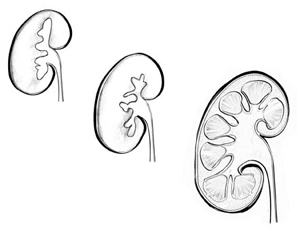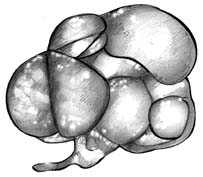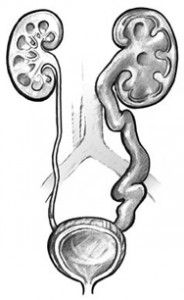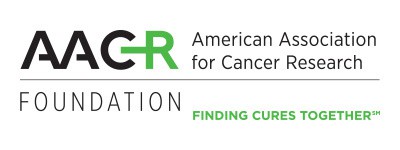“Modern Family’s” Sarah Hyland Undergoes Kidney Transplant

Sarah Hyland, who plays daughter oldest daughter Haley Dunphy on the award winning comedy series Modern Family, revealed that she recently underwent a kidney transplant. The 21-year-old Hyland, in the latest issue of Seventeen magazine, spoke about how she has suffered from a congenital kidney condition called kidney dysplasia. In April of this year, she underwent a kidney transplant with a kidney donated by her father.
When asked about this “greatest gift,” Sarah told Seventeen:
You know that family is going to be there for you no matter what. My dad gave me a freakin’ kidney! But it’s also the families that you create outside of your family. And you really find out what kind of people you’re friends with. It was just amazing, and it really opened my eyes to see who’s there for me and who’s not.
Sarah has become very supportive of the George Lopez Foundation. The organization’s mission is “to create positive, permanent change for underprivileged children, adults and military families confronting challenges in education and health, as well as increasing community awareness about kidney disease and organ donation.” According to Sarah:
I think it’s really great because it gives kids opportunities they wouldn’t normally have and I’ve had experiences like that in my life, so it’s really close to my heart.
What is kidney dysplasia?
Source: National Kidney and Urologic Diseases Information Clearinghouse (NKUDIC)
The kidneys are a pair of bean-shaped organs that filter fluid and wastes from the blood to form urine. Urine flows from the kidneys to the bladder through tubes called ureters. Kidney dysplasia is a condition that can occur in babies while they are growing in the womb. Other terms that health care providers and scientists use to describe this condition are renal dysplasia and multicystic dysplastic kidney (MCDK).
In kidney dysplasia, the internal structures of one or both of the baby’s kidneys do not develop normally.
Fluid-filled sacs called cysts replace normal kidney tissue. Kidney dysplasia usually happens in only one kidney.
A baby with one working kidney can grow normally and has few, if any, health problems. Babies with kidney dysplasia affecting both kidneys generally do not survive pregnancy, and those who do survive need dialysis and kidney transplant very early in life.
How does kidney dysplasia happen?
Ureters are tubes that grow into the kidneys and branch out to form a network of tubules that will collect urine when the fetus is developing in the womb. In kidney dysplasia, the tubules fail to branch out completely. The urine that would normally flow through small tubules has nowhere to go, so it collects inside the affected kidney and forms cysts.
 During normal development, the tubules that collect urine branch out throughout the baby’s kidneys.
During normal development, the tubules that collect urine branch out throughout the baby’s kidneys.
Left: Drawing of three kidneys that represent different stages of development. At the upper left, the smallest kidney is connected to a ureter with only a couple of branches into the kidney. In the middle, a slightly larger kidney is connected to a ureter with a few more branches into the kidney. In the lower right, a fully developed kidney has urine-collecting branches throughout the kidney.
 In kidney dysplasia, the tubules fail to branch out, and urine has nowhere to go. The urine collects inside the kidney and forms cysts.
In kidney dysplasia, the tubules fail to branch out, and urine has nowhere to go. The urine collects inside the kidney and forms cysts.
Right: Drawing of a kidney with dysplasia. The dysplastic kidney appears as a cluster of different-sized cysts.
What causes kidney dysplasia?
Kidney dysplasia may be caused by the mother’s exposure to certain drugs or by genetic factors.
Pregnant women should talk with their health care providers before taking any medicine during their pregnancy. Drugs that may cause kidney dysplasia include prescription medicines, such as drugs to treat seizures and blood pressure medicines called angiotensin-converting enzyme (ACE) inhibitors and angiotensin receptor blockers (ARBs). A mother’s use of illegal drugs-such as cocaine-can also cause kidney dysplasia in her unborn child.
Kidney dysplasia can also have genetic causes. The disorder appears to be an autosomal dominant trait, which means one parent may pass the trait to a child. When kidney dysplasia is discovered in a child, an ultrasound examination may reveal the condition in one of the parents.
Several genetic syndromes that affect other body systems may include kidney dysplasia as one part of the syndrome. A syndrome is a group of symptoms or conditions that may seem unrelated but are thought to have the same cause-usually a genetic cause. A baby with kidney dysplasia might also have problems of the digestive tract, nervous system, heart and blood vessels, muscles and skeleton, or other parts of the urinary tract.
Problems of the urinary tract that lead to kidney dysplasia might also affect the normal kidney. For example, one urinary birth defect causes blockage at the point where urine normally drains from the kidney into the ureter. Another birth defect causes urine to flow from the bladder back up the ureter, sometimes all the way to the kidney. This condition is called reflux. Over time, if these problems are not corrected, they can damage the one working kidney and lead to total kidney failure.
Left:Two drawings showing different problems in the urinary tract. The left drawing shows a kidney that is swollen because the ureter is closed, preventing urine from leaving the kidney. The right drawing shows urine flowing backward from the bladder to the ureter and kidney. The affected ureter and kidney are swollen.
What are the signs or complications of kidney dysplasia?
The affected kidney may be enlarged at birth. This and other abnormalities in the urinary tract make the children more prone to urinary tract infections.
Children with kidney dysplasia may develop high blood pressure, but only rarely.
Children with kidney dysplasia may have a slightly increased risk for kidney cancer.
Chronic kidney disease and kidney failure may develop if the child has urinary problems that affect the normal kidney. Many children with kidney dysplasia in only one kidney have no signs or symptoms.
How is kidney dysplasia diagnosed?
Kidney dysplasia is often found during a fetal ultrasound, also called a sonogram, during pregnancy. Fetal ultrasound uses sound waves to create images of the baby growing in the womb. However, the condition is not always detected before the baby is born. After birth, an enlarged kidney may be detected during an examination for a urinary tract infection or other medical condition.
How is kidney dysplasia treated?
If the condition is limited to one kidney and the child has no symptoms, no treatment may be necessary. Regular checkups should include blood pressure measurements, blood tests to measure kidney function, and urine testing for protein. Usually the child is monitored with periodic ultrasounds to look at the affected kidney and to make sure the other kidney continues to grow normally and doesn’t develop any other problems. Children with urinary tract infections may need to take antibiotics.
Removal of the kidney should be considered only if the kidney
- causes pain
- causes high blood pressure
- shows abnormal changes on ultrasound
What is the long-term outlook for a child with kidney dysplasia?
Many children with kidney dysplasia in only one kidney grow into healthy adults without any problems.
The dysplastic kidney may shrink as the child grows. By age 5, the kidney may no longer be visible in x-ray or ultrasound examinations.
Children and adults with only one working kidney should have regular checkups for high blood pressure and kidney damage. A child with urinary problems that lead to kidney failure may eventually need a kidney transplant or blood-cleaning treatments called dialysis.
We have done a number of stories about kidney and other organ transplants:
Natalie Cole: Kidney Transplant
Steve Jobs: Liver Transplant
“Grizz” Chapman: Kidney Transplant
Natasha Richardson: Organ Donation
Charla Nash: Facial Transplant
Have you or a family member dealt with kidney disease? Tell us about your experience.




























1 Comment